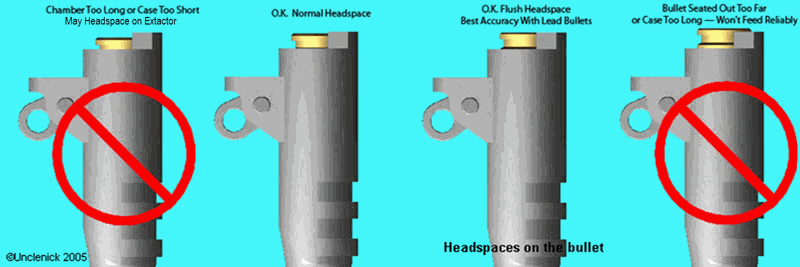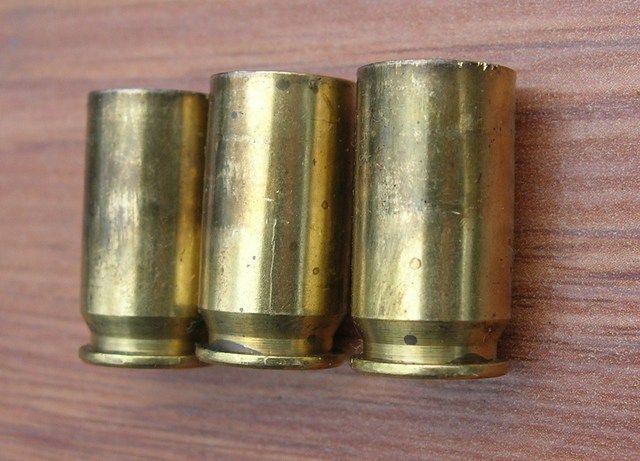chefman4u2,
Welcome to the forum.
A couple of points. Since the 45 Auto is designed to headspace on the case mouth, the mouth diameter of the finished round has a specification to meet. It is to be between 0.467-0.473" wide. You should not crimp it more narrowly than this unless you are seating bullets out to headspace on the bullet instead of on the case mouth (see third from left in illustration below). Many old time (60's and earlier) target shooting competitors actually headspaced on the bullet and put a fairly firm roll crimp into soft lead bullets (swaged). This improved pressure and ignition consistency with light loads and many said they'd found this the most accurate combination.
As others pointed out, soot is a sign of pressure that is low, but it means
low for the powder you chose and not necessarily low for the gun. This can happen because the slower burning your powder choice is, the higher the pressure it needs to burn cleanly is. If you are running light loads, choose a fast powder. This way you will be using a smaller charge weight, making adequate peak pressure for the powder choice. Note also that for any given powder charge, the lighter the bullet, the lower the peak pressure, so very light bullets often need very fast powder to burn at all cleanly.
Let us know what your load consists of, and we can offer comments. I'll say, in general, the 45 Auto has such a wide, short powder column that you can get full normal hardball performance using powders no slower than 231, Unique, or Universal. High IPSC power factor +P loadings need slower powders, like Power Pistol, HS6, or Accurate No.5 or 7, but unless you load those kinds of rounds, you are just burning more charge weight and making more recoil and fouling and don't need them. Very light (185 grain and lighter bullet) gallery loads can use powders as fast as Clays and VV N310 and N100 to good effect. Bullseye has long been an old standard in this round. For full power hardball I use Hodgdon Universal because it is cleaner than the other two powders or than Unique, which has a long history in this cartridge, too, but at target load pressures it tends to leave unburned grains behind.



